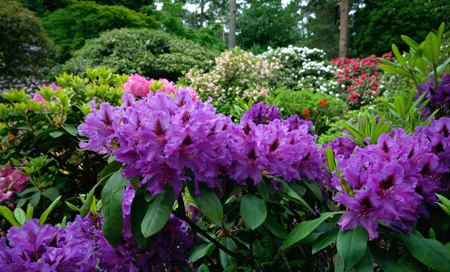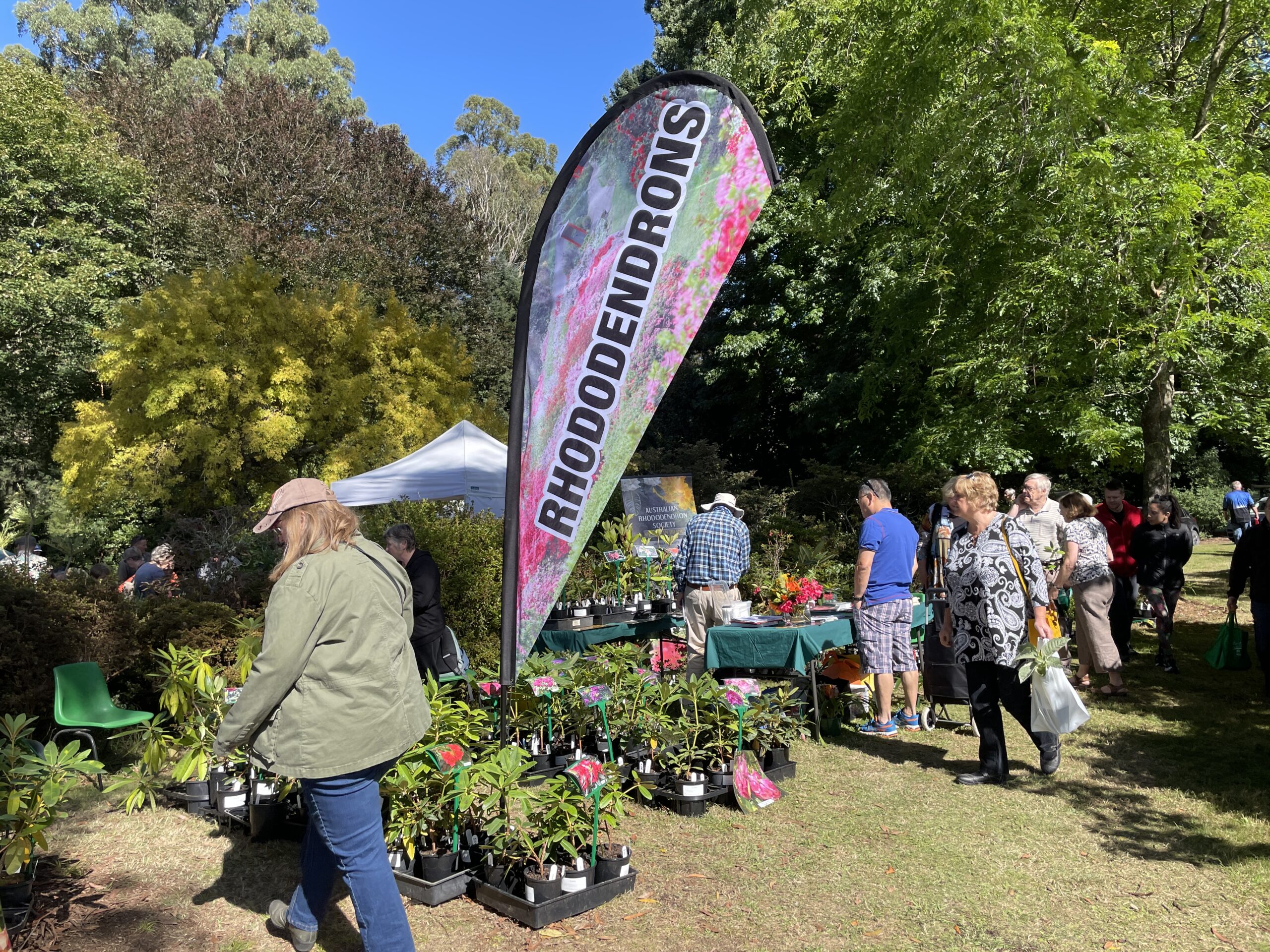Guest Article MANAGEMENT OF LACE BUG AT MTBG
Management of Lace Bug at Mount Tomah Botanic Gardens
With the ongoing “lacebug on rhododendrons” discussions that inevitably occur amongst Society members and horticulturists, some information from Mount Tomah Botanic Gardens’ Procedures and Plans may be of interest, and perhaps even offer some hope, for the management of this very clever, but very damaging, insect.
Over the last 15 or so years many changes have been implemented, and are ongoing, in the management practices for rhododendron lacebug at MTBG. These changes have been brought about by many factors including pesticide resistance, a greater awareness of the unacceptable aspects – both to humans and the environment – of the use of upper range S-rated chemicals, and changes in the range of new products available.
Initially the rhododendrons, some 1,800 specimens, were “preventively”sprayed with a systemic – up to an S7, such as Lebaycid®; an S6 – Folimat®; an S7; or Metasystox® – which was de-registered six or seven years ago. These are no longer considered best options due to their toxicity to operators, and the inconvenience of withholding periods required before re-opening areas to the public after spraying. The toxicity effects to bees and other insects are also taken into account. Products containing pyrethrum are also not favoured as pyrethrums kill all insects. The marketing of the “natural” qualities of pyrethrums has masked the fact that it kills all insects, the “beneficials” as well as the targeted “problem” insect.
For the last few seasons two trials have been running using DC Tron Plus®, a highly refined petroleum-based “winter oil”, and lately, Azamax®, derived from neem oil and recommended to be mixed with Eco Oil®. Although Azamax® has some systemic action (a few days) it is mainly a contact insecticide, and DC Tron Plus® has a physical (smothering) action rather than a chemical one. These products do not have fast/knockdown and systemic action to the levels we are accustomed to expect from previously mentioned systemics, thus requiring more frequent applications (as often as every ten days, or as hatching/emergence of nymphs is noticed). The most critical aspects of using these are the timing and comprehensive coverage, i.e. at the onset or presence of nymphs, before they become adults.
Both the products we are trialling – DC Tron Plus® and Azamax® – only control nymphs. Therefore, if it is a population of adults rather than nymphs to be managed an application of Confidor® is appropriate.
Presently Imidacloprid, an S5 sold as Confidor®, is used as the main backup treatment if the latest trials are not keeping adult numbers down to acceptable levels.
Caution: The use of Confidor® more than once on any plant in any one season, can bring on a resistance. This is well documented from use in glasshouse vegetable production in Europe. So a return to frequent applications of Azamax® or DC Tron Plus® will control nymphs. There is a short period of systemic action from Azamax®, and both these products need to be generously sprayed onto the undersides of the leaves of affected plants to make good contact with the nymphs. Applications as frequently as ten day intervals will not harm plants, providing drought conditions are not being experienced, with continuous bright hot sunny days.
Our records show that results have been good overall, with only occasional use of S5 treatments, as the back up for the two “softer” options. The weather conditions are the unpredictable factor, of course. Warm, dry conditions over extended periods are an alert to check for outbreaks. In managing such a large and widespread collection of rhododendrons, communication between staff responsible for different areas is critical to timing of spraying .
There is some discussion amongst staff about specimens which are planted in direct sunshine and which are repeatedly attacked by lacebug. These susceptible plants are from the flowering groups varying from white, cream, purple or even vermillion-red, so the theory that pale coloured flowers are the most likely to be affected is not reliable. Certainly any specimens with an easily visible indumentum are mainly unaffected. Walter Lobbezoo at the National Rhododendron Gardens, Olinda, has found that shade on group plantings can be most beneficial. We have also found that new growth is not favoured, either because it hasn’t the preferred nutrition content, or perhaps simply because the nymphs, after hatching, are still on the previous season’s foliage because it’s convenient. Some pruning after flowering can also be very beneficial, although not always achievable in tall specimens.
The best management of lacebug is now a long term process, and an investment. Our records show that if one season is well managed, by good practices and/or favourable weather conditions, then the following year can be more easily managed. The new products available mean a constant re-examining of our programs.
Kathy Wilson is a Senior Horticulturalist at the Mount Tomah Botanic Gardens, the “cool climate” gardens of the Royal Sydney Botanic Gardens, situated in the Blue Mountains west of Sydney.

Latest Newsletters
- Emu Valley
- ARS Victoria
- Emu Valley
- ARS Victoria



